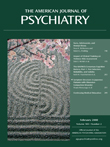Disorders of Sex Development: Improving Care for Affected Persons and Their Families
To The Editor: In their clinical case conference, published in the October 2007 issue of the Journal , J. Michael Bostwick, M.D., and Kari A. Martin, M.D., (1) correctly pointed out that clinical management of intersex conditions is highly controversial. They failed to note, however, two recent and important developments aimed at improving care in this area.
One recent development is the Consensus Statement on Management of Intersex Disorders (2) . This document, which grew out of a conference of 50 international experts in diverse medical specialties, marked the first time researchers and clinicians thoroughly revisited the medical standard of care for diagnoses of intersex conditions since John Money and his associates first proposed treatment standards in the 1950s. Participants agreed to recommend several important changes to care that demonstrate a significant shift in thinking for the treatment of intersexuality.
Owing to the recognition that patients and parents (and even clinicians) find the terminology and labels surrounding intersex conditions confusing and stigmatizing, participants adopted a new nomenclature in which intersex was replaced by the more general descriptor “disorders of sex development,” which refers to congenital conditions in which chromosomal, gonadal, or anatomical sex development is atypical. Terms such as hermaphroditism and gender-based diagnostic labels are to be replaced with clinically descriptive terms (e.g., androgen insensitivity syndrome).
Acknowledging that there are minimal systematic outcome data pertaining to genital surgery, that orgasmic capability may be harmed by such surgery, and that there is little documentation to support the widely held belief that early surgery relieves parental distress about atypical genitals, the Consensus Statement on Management of Intersex Disorders states that surgery should only be considered for young girls with “severe” genital virilization. Participants also noted that psychological care should be integral to medical care, that homosexuality should not be construed as an indication of incorrect gender assignment, and that the potential for fertility—originally emphasized for female gender assignment only—should be an important consideration for male gender assignment as well.
The second development is the publication of the Clinical Guidelines for the Management of Disorders of Sex Development in Childhood and the Handbook for Parents (3, 4). Outlining a patient-centered model of care, these guidelines were developed in consultation with clinical specialists, affected individuals and their families, and patient support groups.
Much remains to be done to improve care for persons and families affected by disorders of sex development. However, these two developments are important steps in that direction.
1. Bostwick JM, Martin KA: A man’s brain in an ambiguous body: a case of mistaken gender identity. Am J Psychiatry 2007; 164:1499–1505Google Scholar
2. Lee PA, Houk CP, Ahmed SF, Hughes IA: Consensus statement on management of intersex disorders: International Consensus Conference on Intersex. Pediatrics 2006; 118:e488–500Google Scholar
3. Consortium on Disorders of Sex Development: Clinical Guidelines for the Management of Disorders of Sex Development in Childhood, 2006. www.dsdguidelines.orgGoogle Scholar
4. Consortium on Disorders of Sex Development: Handbook for Parents, 2006. www.dsdguidelines.orgGoogle Scholar



